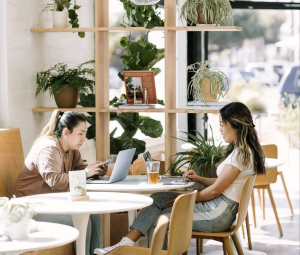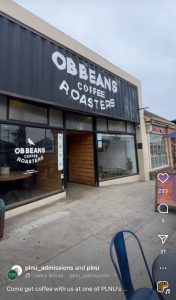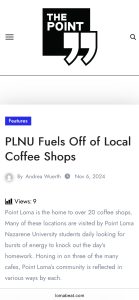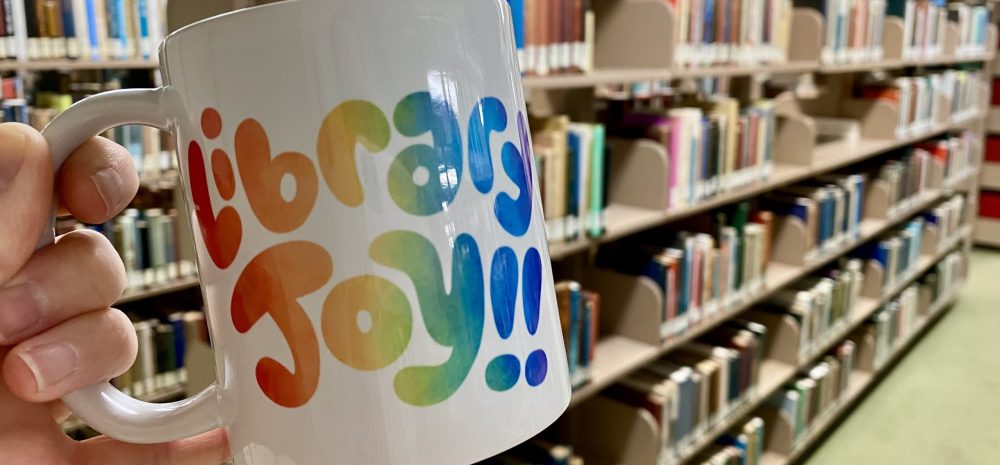
As I sat down to write and reflect on the foundational concepts of our course, I found my mind racing through numerous thoughts at once. I couldn’t help but wonder if it was the caffeine in my large matcha latte or the overabundance of exciting possibilities that was putting my brain into overdrive… perhaps it was a bit of both!
With time I began to notice that the swirl of ideas in my head all centered around one central concept, The Hyperlinked Library model and specifically reaching current and potential library users. I was drawn to this concept for two reasons. First, the future of libraries and their use depends on our community members recognizing that a library’s very existence is necessary. In other words, in order for our libraries to grow and thrive we need people using them. The second reason this concept stood out to me is connected to a recent lecture I attended. The speaker shared that a Harvard study found that “36% of all Americans—including 61% of young adults and 51% of mothers with young children—feel ‘serious loneliness’ (Harvard, 2021).” This statistic both astounded and profoundly saddened me. The concept of the Hyperlinked Library and reaching out to our unmet community members feels almost vital to the health of our country.
What I love about the Hyperlinked Library model is that it seeks to bring people together. Stephens writes “The hyperlinked librarian understands that the library is everywhere—it is not just the building or virtual spaces. (Stephens, 2016)” He continues on to say “We must reach all users, not just those who come through our doors” (Stephens, 2016). What an exciting concept! The studies show that Americans need community and they need a place where connections can be made. As a current team member of the library staff for an academic library, my specific question leans toward how can I bring this model to my university.
Without a doubt, the number one requested service at my academic library is the use of our group study rooms. I think this speaks to the desire that our library users seek to be in community with one another. The study rooms are almost always all in use and while I am not super involved with the circulations desk, I have noticed that our “Sorry, all rooms in use” sign is virtually always out. Areas where students can collaborate and work together are what our library users want and need. Since I was also curious about the needs of our non-regular users I was prompted to do a little digging into the school’s social media and school newspaper to see where else the university’s students go to study. The answer is not very surprising… local community-oriented coffee shops!

University social media post about favorite study spots.

Campus newspaper article about favorite student homework spots
I am still working out what bringing this perspective and practice would specifically look like for my university’s library. However, I am convinced that applying the idea of the Hyperlinked Library model has the potential to meet our users’ needs along with the needs of our “non-users”, aka the coffeehouse crowd. How do we get the cozy Hygge, coffee shop vibe into our library space? As mentioned in Stephens’ Wholehearted Librarianship, Joe Pickard defines Hygge as “the art of building sanctuary and community, of paying attention to what makes us feel alive. A feeling of belonging to the moment and celebrating the everyday” (2019). Taking this thought a bit further, do we even need to bring this to the library or could we work smarter and not harder and partner with where the students are already going? Perhaps some librarian research help could take place off-site from the tables of the local coffeehouse, a weekly trivia night could be sponsored by our library, or maybe we could invite a rotation of favorite coffee vendors to supply an in-house coffee cart.
While these ideas might seem a bit lofty, I’d rather reach high than not try at all. Casey’s words remind us that “If we don’t make significant changes in the way we create and maintain services, we will lose our relevance for the majority of library users” (2007). So, here’s to another cup of matcha tea and collaborating with the coffeehouse crowd!
References:
Casey, M. E., & Savastinuk, L. C. (2007). Library 2.0: A guide to participatory library service. Medford, N.J: Information Today.
Cashin, A. (2021, February 9). Loneliness in America: How the Pandemic Has Deepened an Epidemic of Loneliness and What We Can Do About It. Making Caring Common. https://mcc.gse.harvard.edu/reports/loneliness-in-america
Communal Coffee. (n.d.) [Photograph]. Website.
Point Loma Nazarene University [@plnu and @plnu_admissions]. (2025, June 13). “Come get coffee with us” [Photograph]. Instagram.
Stephens, M. (2016). The Heart of Librarianship: Attentive, Positive, and Purposeful Change. ALA Editions.
Stephens, M. (2019). Wholehearted Librarianship: Finding Hope, Inspiration, and Balance. ALA Editions.
Wuerth, A. (2024). PLNU Fuels Off of Local Coffee Shops. The Point.

Hi! As someone with an interest in potentially working in an academic library, I love to read about the topic. I recently toured a university library near me, and the librarian I met with also said that she sees students wanting to meet in groups—and it’s inspired them to reconfigure and redesign meeting rooms, adding white board walls and furniture that’s easy to move around. Interestingly enough, there is a coffeeshop (yes, a Starbucks) attached to the library and it’s not uncommon for students to toggle between the two spaces. I love your ideas of partnering with a local coffeeshop, which would be a win-win—bringing customers to a local business and raising awareness that your library is a place where students might want to spend more time!
Brooke
Hi Brooke! I love the idea of having a coffeeshop attached to the library and I’m sure our student’s would equally agree! I’ve heard some talk that my university provosts would like to utilize some underused space attached to the library for something similar to what you saw, however, I think the plan is still in the dream phase… hopefully we can make it a reality sooner than later!!